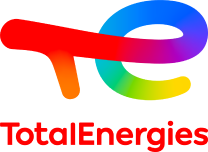AUSEA: The Solution for Detecting and Measuring CO2 and Methane Emissions
05/25/2023
Behind the scenes of AUSEA, a technology developed by TotalEnergies, CNRS and the University of Reims Champagne-Ardenne to detect and quantify methane and carbon dioxide emissions with a high level of precision.
Employee working on the AUSEA project
Right now we are getting ready. We've outlined the flight zone, the lidar (measurers wind factor) is on and then we launch the measurements.
Emmanuel Pradié, VP Customer Line CO2, OneTech
When you want to avoid, reduce and offset, you obviously need to start by measuring, and that is the point of AUSEA, to measure the methane and CO2 emissions on our sites.
Regarding methane: by 2025, the company aims to have reduced known emissions by 50% compared to 2021 levels within the operational perimeter. And by 2030, to have reduced emissions by 80% relative to our 2021 levels, within the same perimeter. As such, it is completely in line with our policy to “avoid, reduce, offset”.
Nicolas Huet, Architect CO2 Customer Line, OneTech
The basis for the project is a sensor that measures methane levels in the stratosphere.
Lilian Joly, Professor at University of Reims Champagne-Ardenne
And the objective was to see if it was possible to transform this sensor and attach it to a drone in order to gauge emission levels of greenhouse gases at all the TotalEnergies sites.
Nicolas Huet, Architect CO2 Customer Line, OneTech
The sensor was identified and miniaturised to change vectors, and to shift from balloons to drones. Over the course of 2022, we deployed AUSEA in Congo, Angola and Nigeria in some very varied conditions. That covers 125 different facilities.
Ludovic Donnat, Project Manger R&D Advanced GHG measurement
The AUSEA adventure first began in 2017, when we collaborated with the GSMA laboratory at the Université de Reims, which is a national research laboratory. The project involves a very light, high-performance sensor attached to a drone that can fly right into our smoke plumes and take a sort of scan of our emissions.
We have continued to develop AUSEA with the intention of making the system entirely automatic, using drones with autonomous navigation capabilities and automatic data feedback to our servers for treatment and reporting purposes, that will happen automatically, so that local operators at the facilities can access the results immediately.
Lucas Sahouli, Project manager / UAV Pilot, ROAV7
Here, we are at the cogeneration unit at Gonfreville-l'Orcher, the TotalEnergies refinery. The acquisition protocol was developed in tandem with the LQA (Laboratoire Qualité de l’Air) and the CNRS. This protocol adapts according to the object that is being studied. For example, on a flare, we will tend to keep our distance and take measurements from higher up, but when we are looking for fugitive emissions, the tests will be closer and more precise.
Nicolas Huet, Architect CO2 Customer Line, OneTech
The priority for the AUSEA project in 2023, is to concentrate on our operational assets in exploration and production. We want to go from a commando-style team to an integrated project team where we intend to professionalize data acquisition.
Our second objective is to open up to new business. We have just carried out acquisitions at biogas sites and launched acquisitions at electricity production units.
Our final objective for 2023, is to bank flight hours with our autonomous flight programme, which means no pilot. We just equipped drones with an onboard AI system that replaces the pilot.
Pierre Vilpoux, Chairman & CEO UAVIA
This means we have a means of communication, with onboard artificial intelligence, operated from a unified interface that tells the drone: go measure this, go observe that, and the drone receives the order, interprets it and then decides by itself how it will carry out the mission by autonomous navigation. So yes, we think that this is the future for this type of measurement.
Emmanuel Pradié, VP Customer Line CO2, OneTech
AUSEA is going to help us to position ourselves as leader relative to other operators, as we deployed it at all of our operational assets in 2022. And the objective is to retain this leadership in terms of methane emission measurement and to bring the rest of the industry along behind us.
[TotalEnergies logo]



